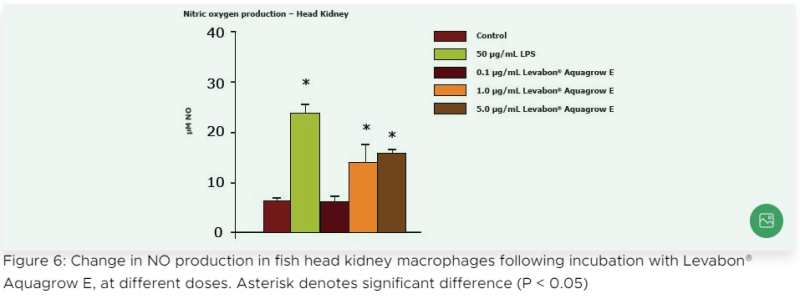Enhanced TDS
Knowde-enriched technical product data sheet
Identification & Functionality
- Animal Feed & Nutrition Functions
- Technologies
- Product Families
Features & Benefits
- Animal Feed & Nutrition Features
- Main Benefits
- BOOSTS IMMUNITY
- IMPROVES DISEASE RESISTANCE
- INCREASES STRESS TOLERANCE
- MAINTAINS INTESTINAL INTEGRITY
Applications & Uses
- Markets
- Applications
- Applications
Mix directly into the feed. Levabon® Aquagrow is heat and pressure stable so it can survive pelleting and extrusion conditions
Dosage
- Typically 2-4 kg/t, with a maximum of 6 kg/t under stressful conditions
- The Science Behind Levabon® Aquagrow – Mode of Action
The outermost layer in yeast is mostly comprised of mannan oligosaccharides (MOS), with other immunologically important compounds in the yeast cell located internally (Figure 1).
This means that in the whole yeast cell form, these are out of reach, especially those aquatic animals with short intestines and rapid transit times.
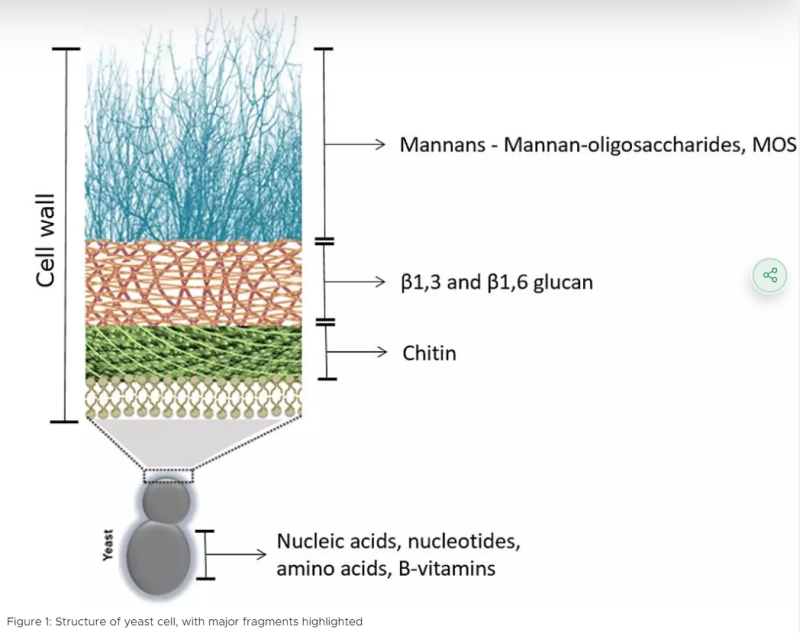
Autolysis breaks open the cell, increasing the biological availability of these important compounds, and present them in a ready-to-use manner, often referred as the ‘popcorn effect’ (Figure 2).
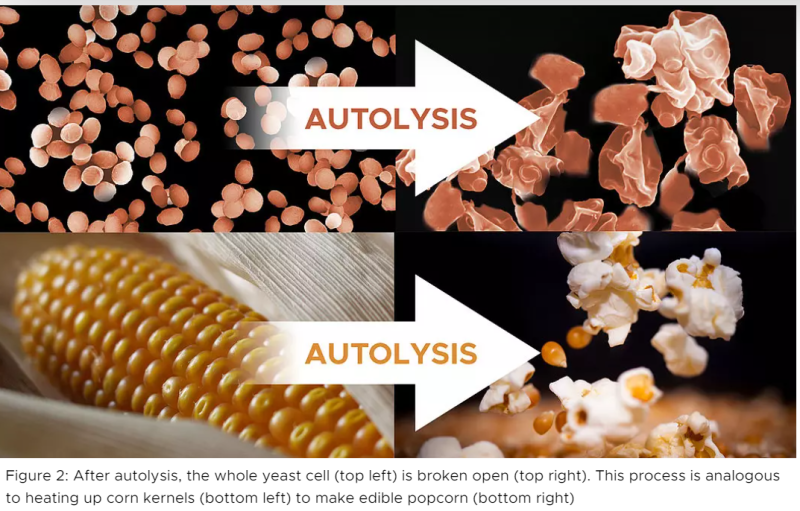 The combination of multiple immune compounds brings synergistic benefits, and is more effective than providing each compound individually. This was demonstrated in barramundi (Lates calacrifer) where Levabon® Aquagrow was test alongside β-glucans and nucleotides alone. After eight weeks of feeding the respective diets, fish were challenged with Streptoccocus sp. via IP injection. Whilst small benefits were observed with the individual immune compounds, the maximum survival was evident with the more complex immune modulator, Levabon® Aquagrow (Figure 3).
The combination of multiple immune compounds brings synergistic benefits, and is more effective than providing each compound individually. This was demonstrated in barramundi (Lates calacrifer) where Levabon® Aquagrow was test alongside β-glucans and nucleotides alone. After eight weeks of feeding the respective diets, fish were challenged with Streptoccocus sp. via IP injection. Whilst small benefits were observed with the individual immune compounds, the maximum survival was evident with the more complex immune modulator, Levabon® Aquagrow (Figure 3).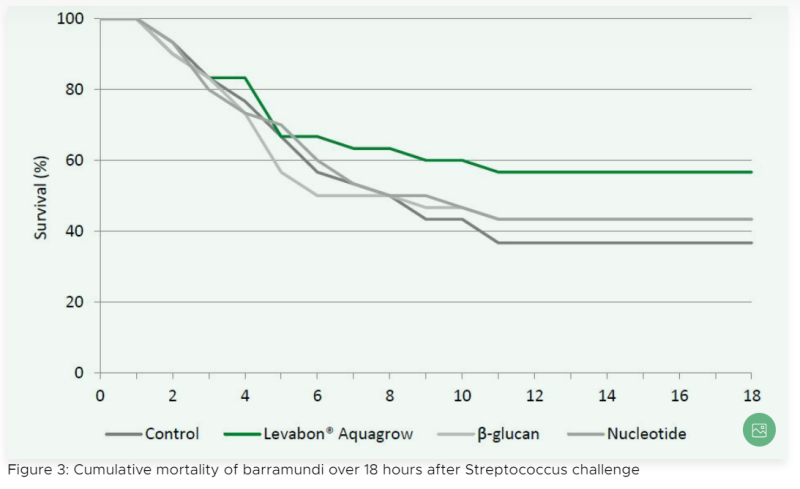
Levabon® Aquagrow has also improved the disease resistance in cold water fish (rainbow trout, Oncorhynchus mykiss) and shrimp (whiteleg shrimp, Litopenaeus vannamei), under different infection models (Figures 4 & 5, respectively).
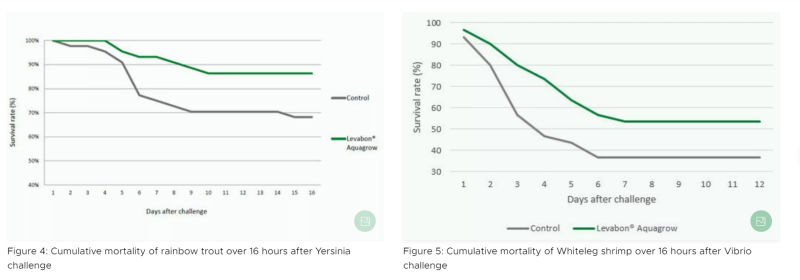
The mode of application can be predicted from extensive literature reviews. MOS is well known for improving gastro-intestinal health, modulating the immune system and can act to adsorb pathogens, preventing their attachment to the gut epithelia. β-glucans are also known to act on many different receptors, initiating molecular cascades which result in immune modulation. One of these pathways activates leukocytes, including macrophages. Macrophages are white blood cells which are responsible for engulfing and subsequently clearing pathogens and they are activated by nitric oxide (NO). It was established that fish macrophages from the head kidney (major immune organ) are activated when exposed to Levabon® Aquagrow, through this NO mechanism (Figure 6).
